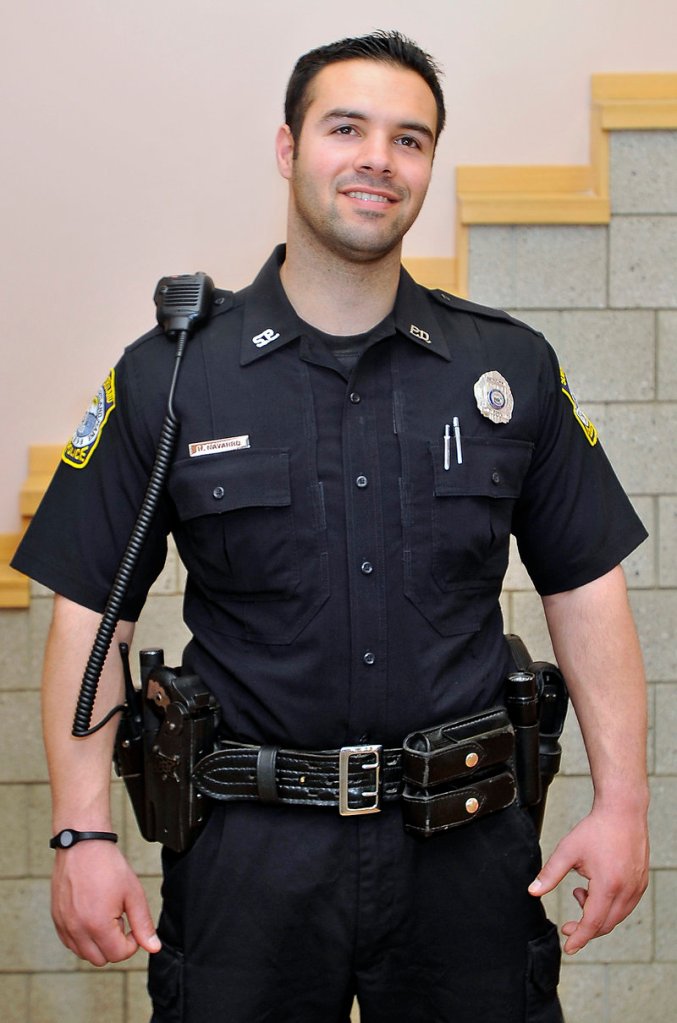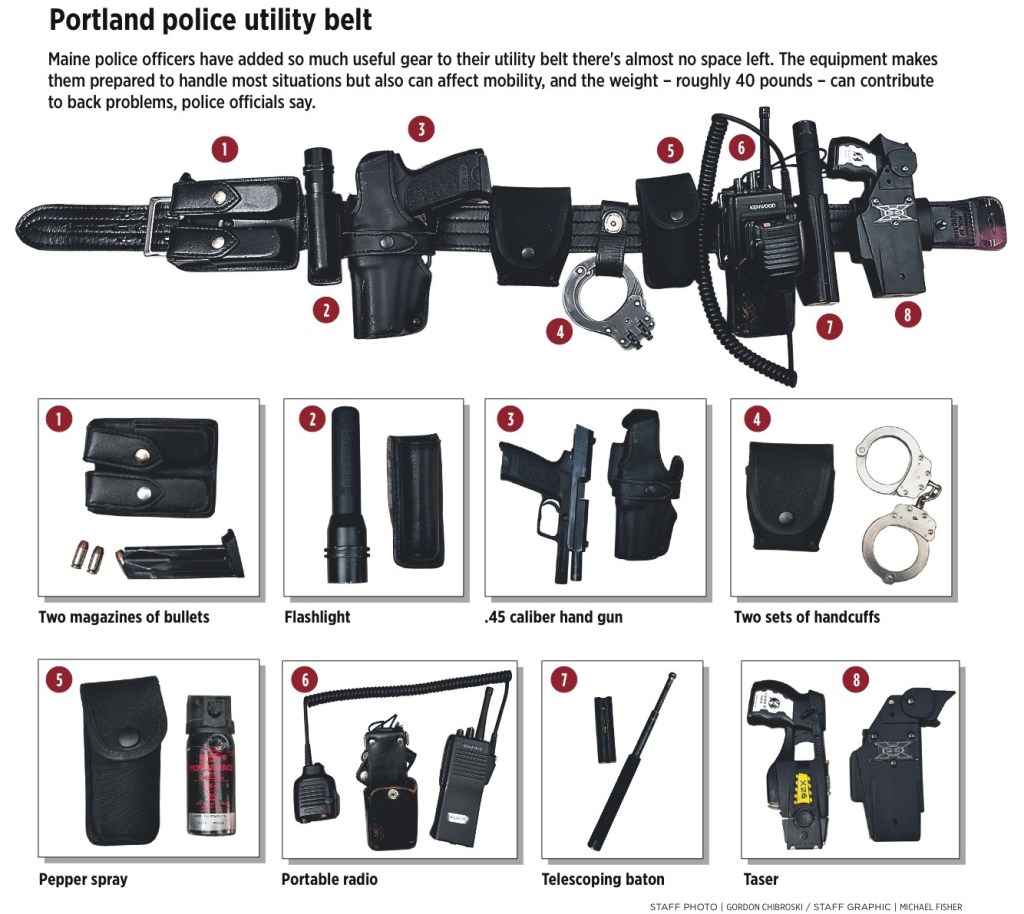New police equipment may be more effective, but the weight of it can add up fast for officers tricked out with the latest gadgets.
“I’m maxed out,” said Lt. Tom Williams of the Cumberland County Sheriff’s Office, gesturing to his crowded utility belt. “I doubt I could put anything else on the belt unless I gained weight, and I don’t think that’s a good option.”
Gone are the days when officers simply carried a service revolver, night stick and handcuffs.
Today, most officers are issued pepper spray, flashlight, collapsible baton, portable radio, extra ammunition, handcuffs, spare handcuffs and a semiautomatic pistol.
All hanging off that belt.
The serious crowding of late can be blamed on the Taser, the electronic disabling device that a growing number of officers carry. The weapon takes up the same amount of space as a gun and is typically mounted on the opposite side of the waist from the firearm to make sure one isn’t drawn in place of the other.
And you should add cellphones to the mix, said South Portland Police Chief Ed Googins.
Googins, president of the Maine Chiefs of Police Association, said almost all his officers carry cellphones to have conversations not broadcast on the police scanner, and to reach people without having to leave the car.
But officers carry those cellphones in their pockets because there simply is no more real estate on the belt, Googins said.
Equipment advances have helped the crowding issue.
Officers now carry compact LED flashlights, much smaller and brighter than the big metal flashlights powered by a stack of D batteries that were once standard issue.
The asp, or collapsible baton, is smaller and has the added benefit of delivering an auditory warning, a click when it opens, that can have a sobering effect on a suspect similar to chambering a round in a shotgun.
The growing amount of gear on the belt also means officers have to deal with more weight and a slight loss of mobility.
Recognizing the impact on posture and on getting in and out of a cruiser, some manufacturers of police cruisers now include a cutaway section in the driver’s seat to accommodate an officer’s waist-borne gear.
Wearing 40 pounds of gear around the waist 40 hours a week can lead to back pain for some officers.
As it is, the wide leather belt is worn over a traditional belt, and often the two are hooked together, said Robert Schwartz, executive director of the Maine Chiefs of Police Association. Schwartz coordinates a police equipment vendor show at the annual chiefs convention.
Some uniforms include a “Sam Browne”-style belt, which typically involves a strap over one shoulder. Manufacturers also make suspenders to better distribute the weight of the belt, much as some carpenters wear, but the shoulder straps have not been embraced by many officers, Schwartz said.
When it comes to crowding, not all utility belts, or the waists they sit on, are equal, Schwartz points out.
“It’s much easier for a person who has a 46-inch waist, than it is one who has a 32-inch waist.”
Staff Writer David Hench can be contacted at 791-6327 or at:
dhench@pressherald.com
Send questions/comments to the editors.




Success. Please wait for the page to reload. If the page does not reload within 5 seconds, please refresh the page.
Enter your email and password to access comments.
Hi, to comment on stories you must . This profile is in addition to your subscription and website login.
Already have a commenting profile? .
Invalid username/password.
Please check your email to confirm and complete your registration.
Only subscribers are eligible to post comments. Please subscribe or login first for digital access. Here’s why.
Use the form below to reset your password. When you've submitted your account email, we will send an email with a reset code.